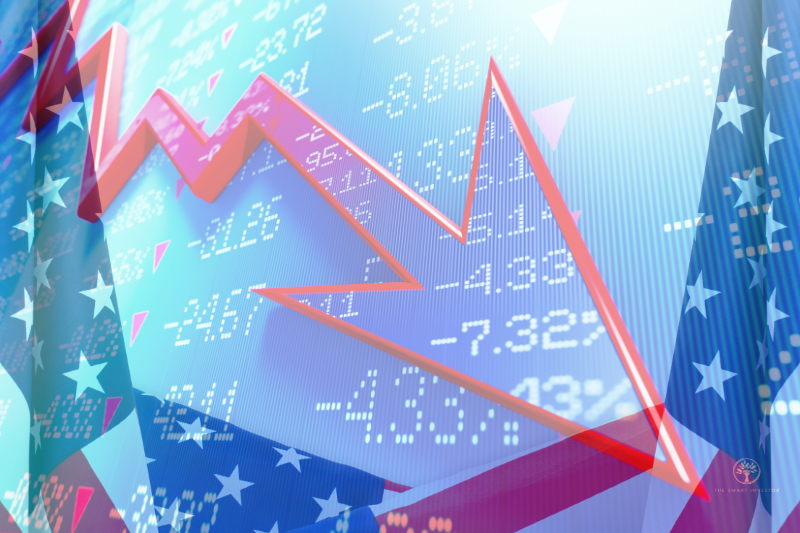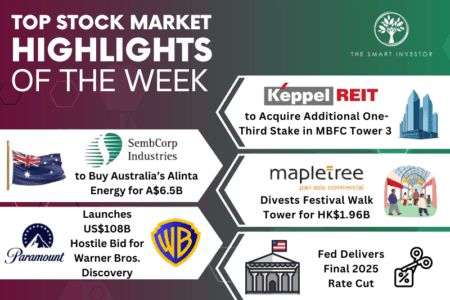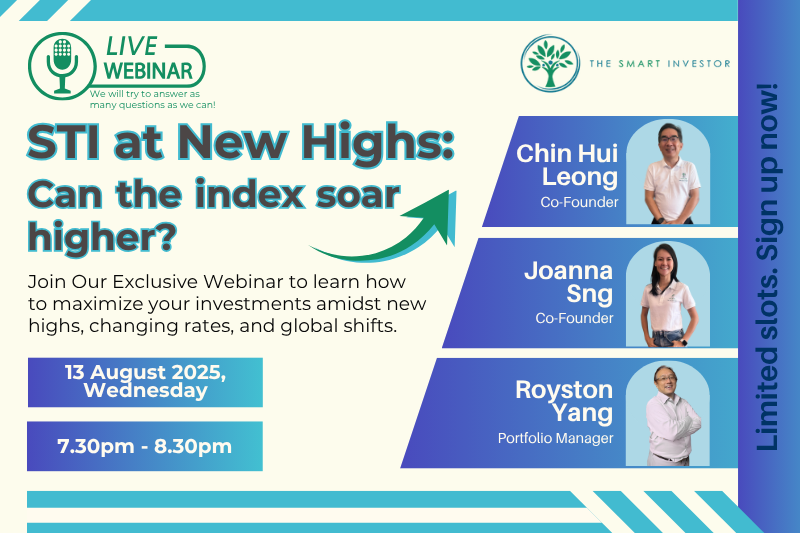Uncertain. Unclear. Unpredictable.
These are just some of the words we have been hearing as we spoke with a couple of Singaporean CEOs at our recent Smart Investor event.
Here’s the thing: it’s not just the local leaders scratching their heads.
US-listed companies started to report their earnings two weeks ago, and from what we can tell, none of the management teams can confidently say that they have a good handle on the full impact of tariffs.
This much is clear: most goods shipped into the US will face at least a 10% tariff.
However, it’s the knock-on effects which are hard to tell ahead of time.
For instance, if prices rise, US consumers may pull back their spending, leading to lower retail sales.
And if consumer demand weakens, business revenues could fall, leading to higher retrenchments.
Could this sequence morph into a recession?
JP Morgan (NYSE: JPM) thinks so, tagging the chances of a recession this year at 60%.
And what about stock prices? Will they continue to fall?
Unfortunately, there are few answers at the moment.
But one thing’s for sure, uncertainty is the only certainty.
Yes, it’s a cliche, but it’s also true.
Are US stocks cheap today?
The US stock market is not waiting around.
Yesterday (22 April), the NASDAQ Composite Index (INDEXNASDAQ: ^IXIC) slipped into a bear market again, down 21.4% from its peak.
But are stocks cheap enough today?
Here’s the twist: most of the share price fall so far is due to market pessimism and not due to businesses weakening.
Let me explain.
A stock price can be broken down into two key components, namely free cash flow (FCF) per share and the price-to-FCF (P/FCF) ratio.
Multiplying FCF per share by the P/FCF ratio gives you the share price.
This simple equation tells you that a stock price decline can either be triggered by a lower free cash flow (FCF) per share or a decrease in the stock’s price-to-FCF ratio.
So, how do we know that the decline so far is due to market pessimism?
For starters, the earnings season has just started.
In other words, most of the companies have yet to report their first-quarter earnings.
Therefore, what you see today is largely based on trailing 2024 FCF per share figures.
In addition, for those that have reported, the impact of Trump’s tariffs are unlikely to have made a significant impact.
That’s because Trump’s Liberation Day was announced on 2 April 2025, after the end of the first quarter.
Said another way: the business figures you see, represented by the trailing FCF per share, are either largely unchanged or do not include the impact of the Liberation Day tariff announcements.
What does that tell you?
The recent stock price decline is mostly due to a fall in the price-to-FCF multiple.
This ratio is a reflection of the stock market’s pessimism.
So, now what?
Here’s the rub: as we said from the start, there is great uncertainty over how tariffs will impact businesses in the near term.
Hence, setting 2025 target prices are futile.
Any attempt to project this year’s earnings will rely on guessing what Trump will do next.
If anything, the US President has been at best, temperamental.
Yet, all is not lost.
The share price equation above teaches us one thing: it’s the business which matters in the end.
In the short term, share prices will seesaw between optimism and pessimism.
But over time, the business will do the heavy lifting for the stock.
Take Meta Platforms (NASDAQ: META).
Between 2020 and 2024, its FCF per share rose from US$8.20 to US$20.70 or a 152% increase.
How about Meta’s share price?
The social media network’s stock price has risen by around 84% since the end of 2020.
What does the difference between these gains tell you?
Firstly, Meta’s share price rise was largely driven by the increase in FCF per share.
Secondly, the stock price today is cheaper than it was in 2020.
Get Smart: Knowing You Don’t Know
Here’s the third thing the equation tells us: understanding the key stock price drivers exposes what you know and what you don’t know.
While we know what the tariff rates are, there’s still a lot we don’t know today.
Even business leaders are still trying to get a handle on the situation.
Hence, being an investor today requires you to be comfortable in admitting that you don’t know everything.
But here’s the thing: valuation is not the only way to manage risk.
The Smart All Stars Portfolio is using every tool at its disposal to navigate this uncertain period.
Make no mistake, this may not be just short-term turbulence.
But we will be there to guide our members every step of the way.
Looking to start investing? Our beginner’s guide will show you how to make the best buying decision and make fewer mistakes. Click here to download for free now.
Follow us on Facebook and Telegram for the latest investing news and analyses!
Disclosure: Chin Hui Leong owns shares of Meta.





